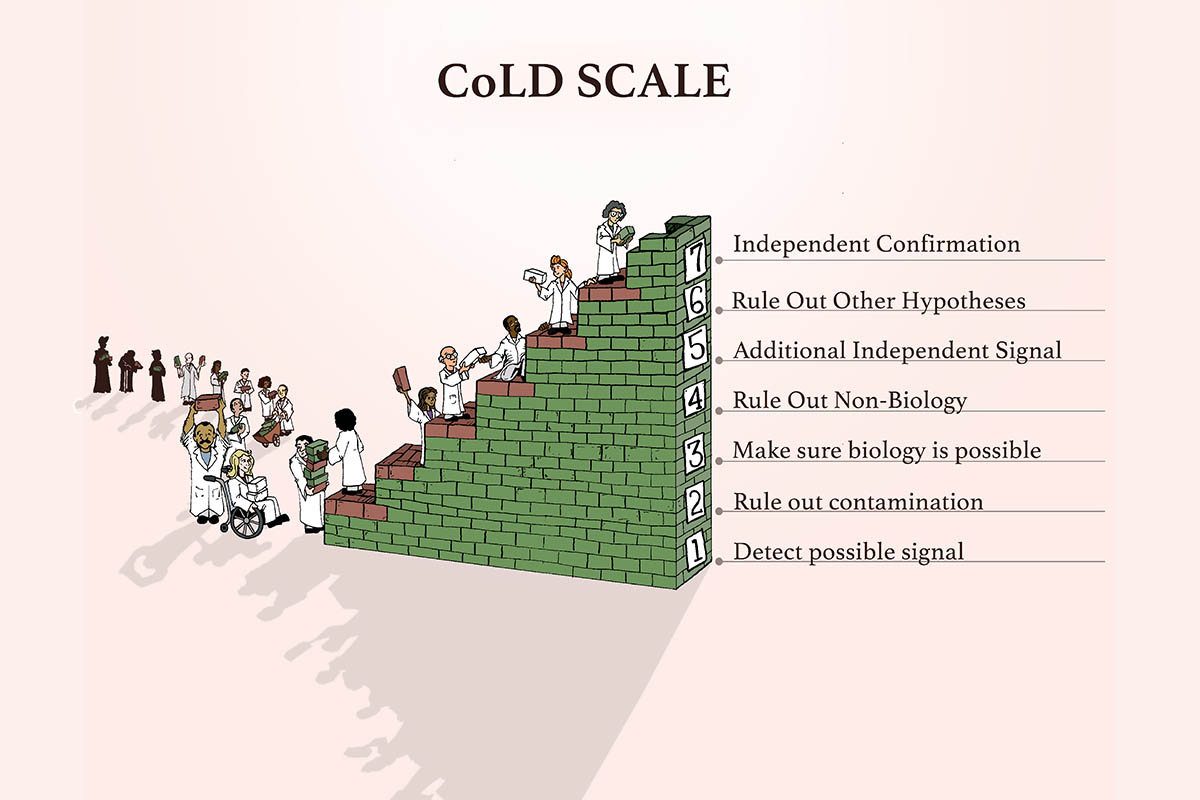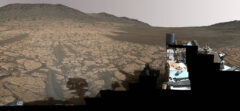As shown in this graphic, astrobiologists catalog a seven-step scale, called the CoLD (Confidence of Life Detection) scale, to research whether a sample could indicate life. This “Cheyava Falls” sample is an example of Step One: “Detect possible signal.” Much additional research must be conducted to learn more. (NASA/Aaron Gronstal)
Home As shown in this graphic, astrobiologists catalog a seven-step scale, called the CoLD (Confidence of Life Detection) scale, to research whether a sample could indicate life. This “Cheyava Falls” sample is an example of Step One: “Detect possible signal.” Much additional research must be conducted to learn more. (NASA/Aaron Gronstal) As shown in this graphic, astrobiologists catalog a seven-step scale, called the CoLD (Confidence of Life Detection) scale, to research whether a sample could indicate life. This “Cheyava Falls” sample is an example of Step One: “Detect possible signal.” Much additional research must be conducted to learn more. (NASA/Aaron Gronstal)
As shown in this graphic, astrobiologists catalog a seven-step scale, called the CoLD (Confidence of Life Detection) scale, to research whether a sample could indicate life. This “Cheyava Falls” sample is an example of Step One: “Detect possible signal.” Much additional research must be conducted to learn more. (NASA/Aaron Gronstal)



